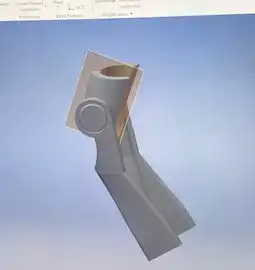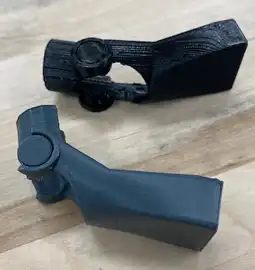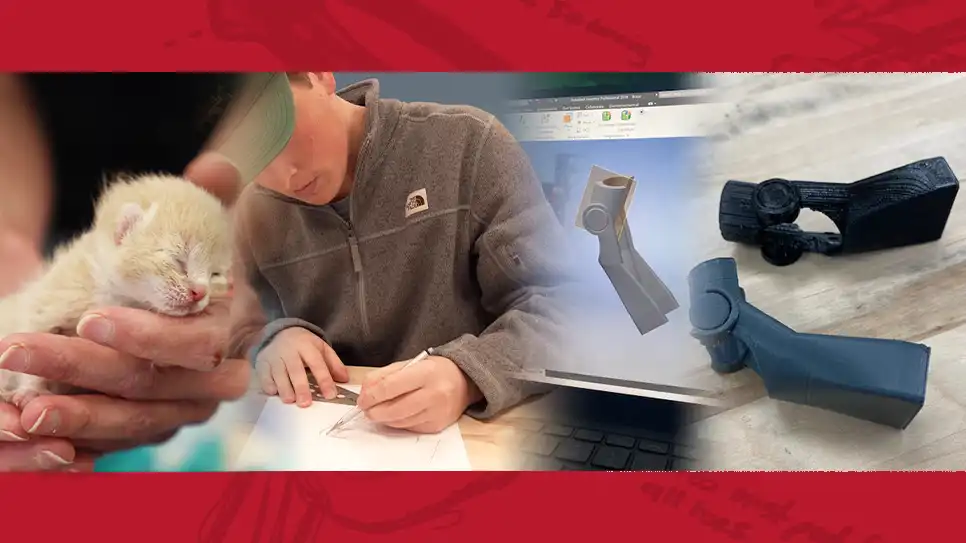When Clayton Kincaid ‘22 heard that a week-old kitten a Miami University librarian was fostering suffered from a condition known as contracted tendons, he combined his student employment in the Libraries’ Makerspace and his engineering education to offer a solution.
Copyright Librarian Carla Myers has a heart for animals, and often fosters cats while they await permanent homes. When she mentioned the challenges of treating a new foster kitten’s condition, which involves physical therapy and makeshift splints—often made from popsicle sticks and rubber bands—to gradually realign the affected leg, Kincaid offered to design and 3D-print a proper brace that could be custom-fit and grow with the cat.
After consultation with veterinarians, who endorsed the plan, Kincaid and Myers carefully took measurements and worked out how the brace should function. Then, Kincaid got to work: he began sketching, modeling, and printing a prototype for little Cheez-It, as the cat was fondly dubbed.
Unfortunately, before treatment could begin with the brace, the kitten became ill due to a previously unknown congenital condition and passed away.
Cheez-It’s story doesn’t end there, however. In the coming days, encouraged by the veterinarians’ continued enthusiasm for the brace project and belief it had the potential to help treat cats with the same condition in the future, Kincaid continued to refine his design.
Before graduating with his degree in Mechanical Engineering, Kincaid finished his customizable model, which others can freely use and adapt to treat kittens with similar conditions, giving them a chance of full recovery.

The 3D model on Kincaid's computer screen

Two prototypes of the leg brace after 3D printing
